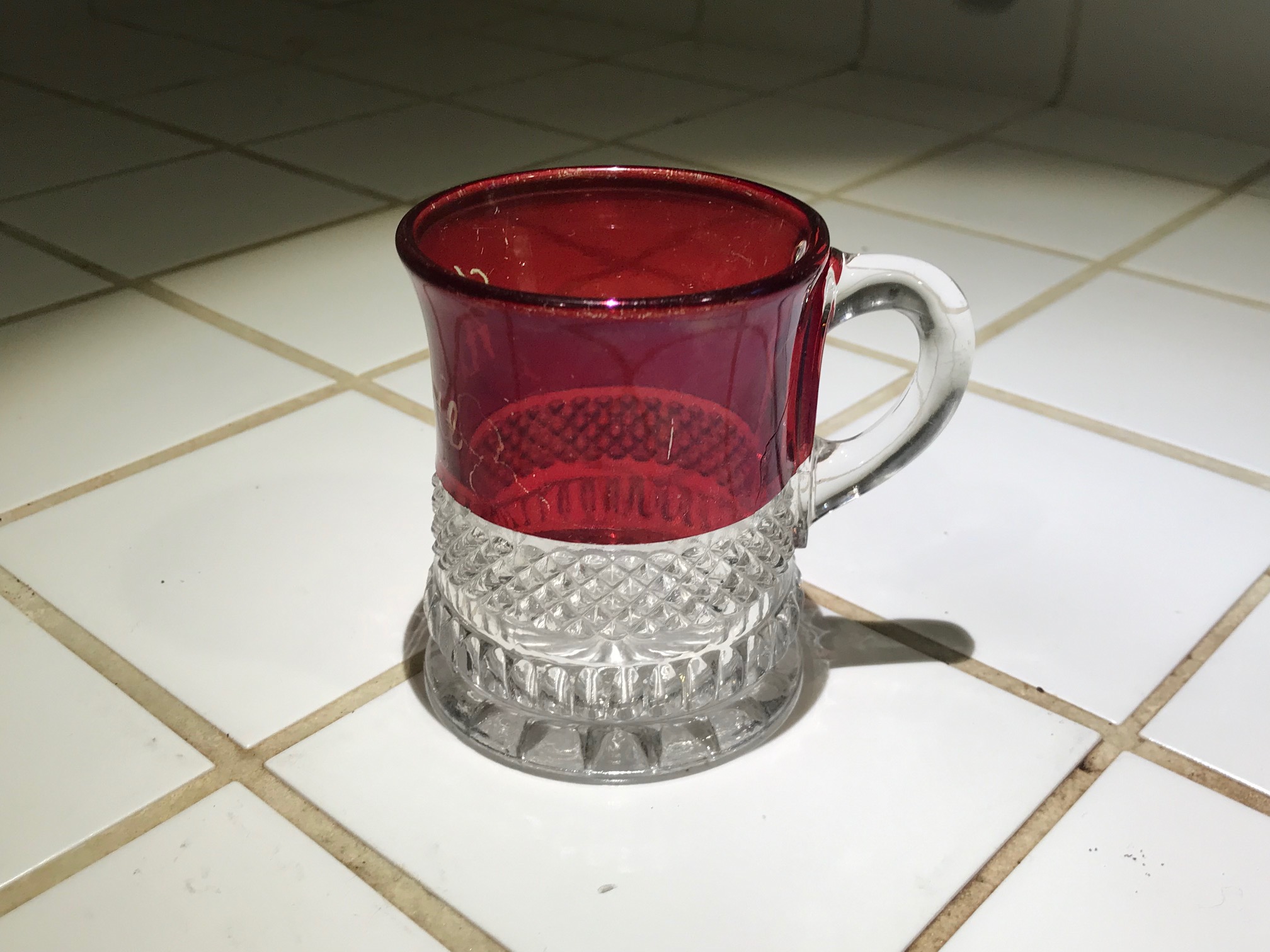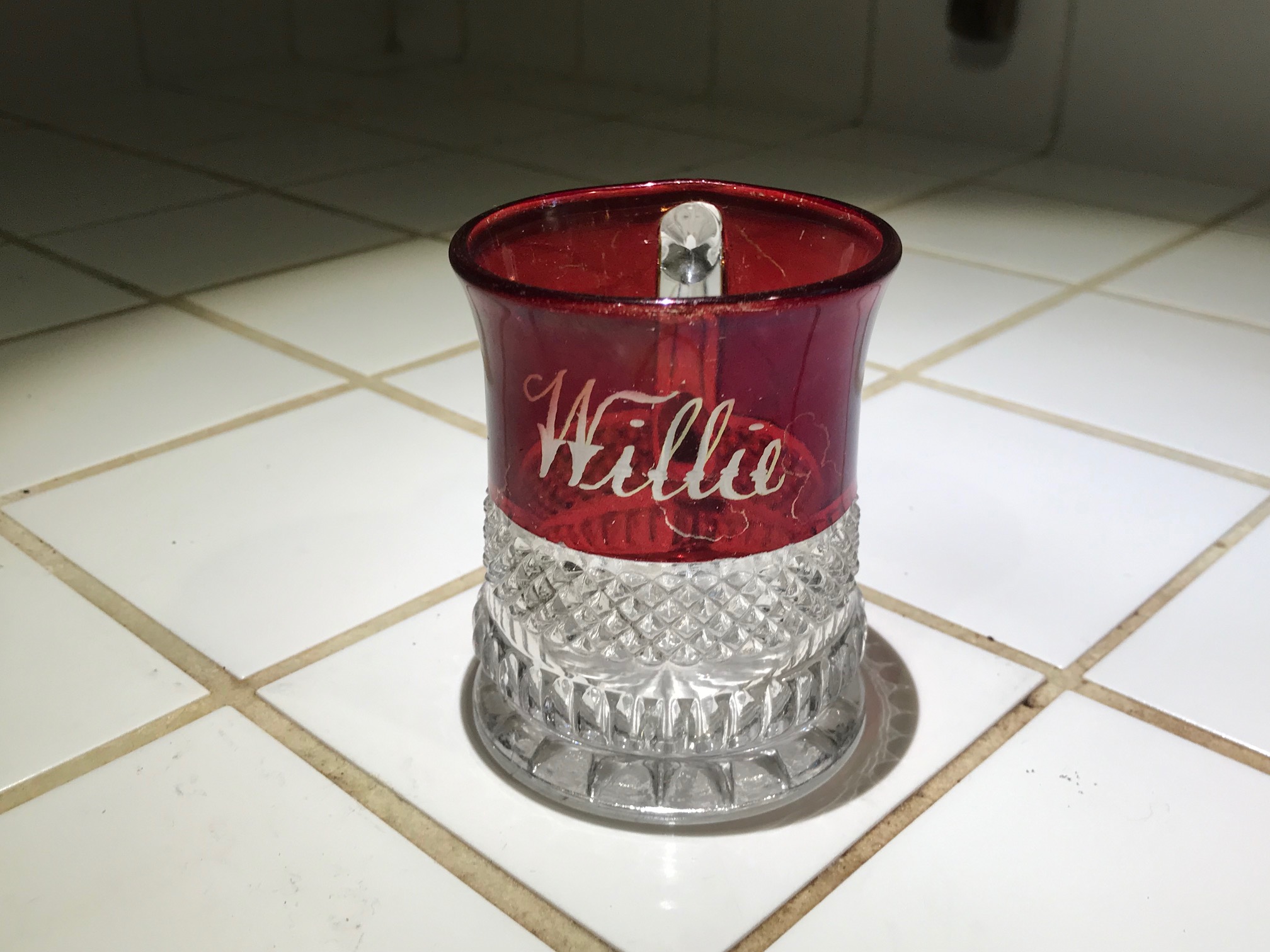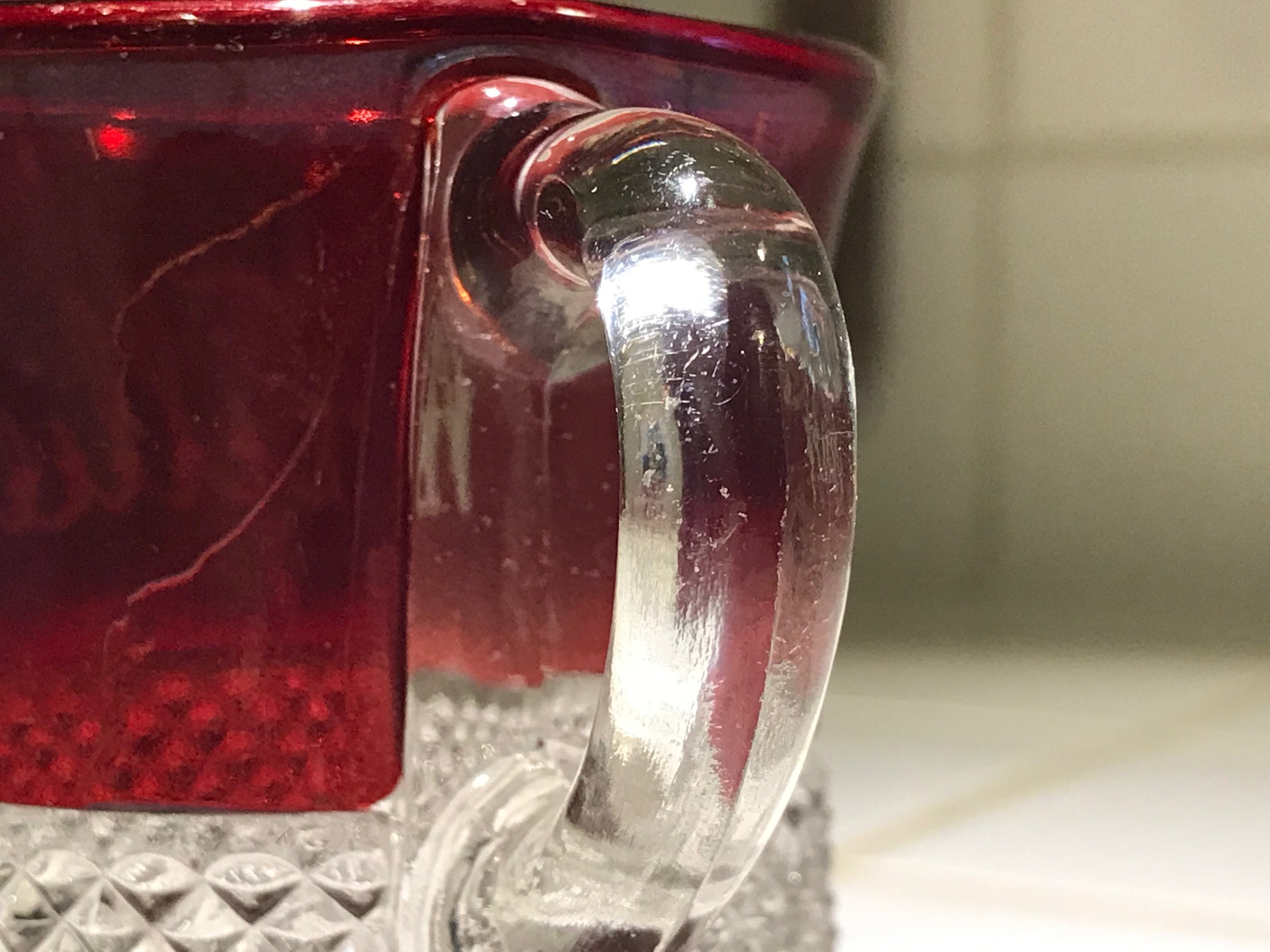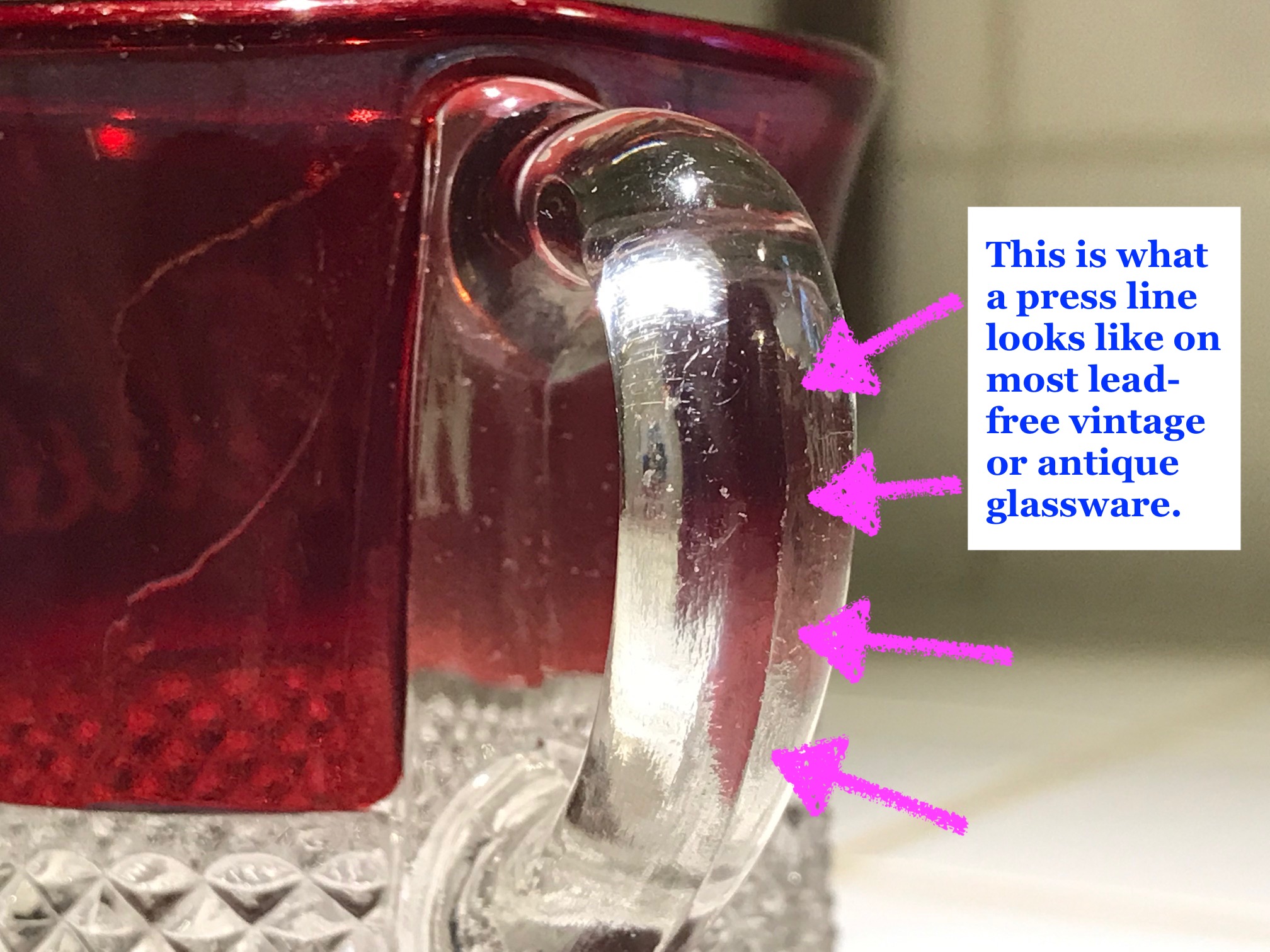Red & clear vintage/antique pressed glass child’s mug: Lead-free!!! Please make a note of the “press lines”
 Press lines often are a good indicator that an antique or vintage functional glassware item (mug, vase, bowl, platter, etc.) is Lead-free (see images below).
Press lines often are a good indicator that an antique or vintage functional glassware item (mug, vase, bowl, platter, etc.) is Lead-free (see images below).
This is not ALWAYS the case, of course — but is almost always the case…in more than 10 years of testing consumer goods for Lead using XRF technology – including thousands of items of this nature – I have only once tested a glass item with press lines (lines left over from the manufacture of typical pressed-glass of this vintage) that ended up being positive for a high level of Lead [that sole anomaly was a Waterford Crystal (Leaded crystal ) beer stein, apparently intentionally made to imitate the look of vintage pressed glass, as a design choice].
The image below is a close-up of the press line on the handle. As a result of the prominent press line on the handle of this glass (as well as other qualities that made me nearly certain it was pressed glass, not cut crystal), I was fairly certain that the glass would be Lead-free prior to testing it with an XRF instrument. I was not sure, however, whether or not the red pigmented areas had Cadmium, but – given the type of wear to the colored areas – since it appears to be a post-manufacturing applied color (not a color embedded in the glass) on a vintage piece – I also suspected it would be Cadmium-free.
Please continue reading below the images.
The exact XRF test results for the diminutive child’s mug (or perhaps it is a punch glass from the type of set where the glasses were hung on hooks around the edges of a bowl?) pictured here were as follows.
Clear glass elements:
- Bromine (Br): 36 +/- 5 ppm
- Vanadium (V): 81 +/- 22 ppm
- Titanium (Ti): 150 +/- 32 ppm
Metals not detected are not listed. Only the three metals listed above (and the four listed below) were detected with the XRF instrument. Tests were done for a minimum of 60 seconds each (in “Consumer Goods” mode) and results are science-based and replicable. Multiple tests were done on each component to confirm the results.
Red painted elements:
- Bromine (Br): 38 +/- 5 ppm
- Copper (Cu): 19,600 +/- 600 ppm [the source of the red color]
- Vanadium (V): 72 +/- 25 ppm
- Titanium (Ti): 113 +/- 33 ppm
This little mug is a classic example of Lead-free vintage / antique pressed glass, (with the press line in the handle) which is helpful in identifying most similar items as likely Lead-free. While press lines are difficult to photograph they are easy to spot in a visual inspection, and can usually be felt (as a raised line on the surface of the item – simply by running your finger over the handle or other location of a visible seam in the item).
As always, thank you for reading and for sharing my posts.
Please let me know if you have any questions.
Tamara Rubin
#LeadSafeMama 
Never Miss an Important Article Again!
Join our Email List











In instances like a 1950s Libbey clear etched glass goblet (Glenmore if I remember correctly), there are press lines in the stem but not the bowl. Would that put the bowl at a higher chance of lead?